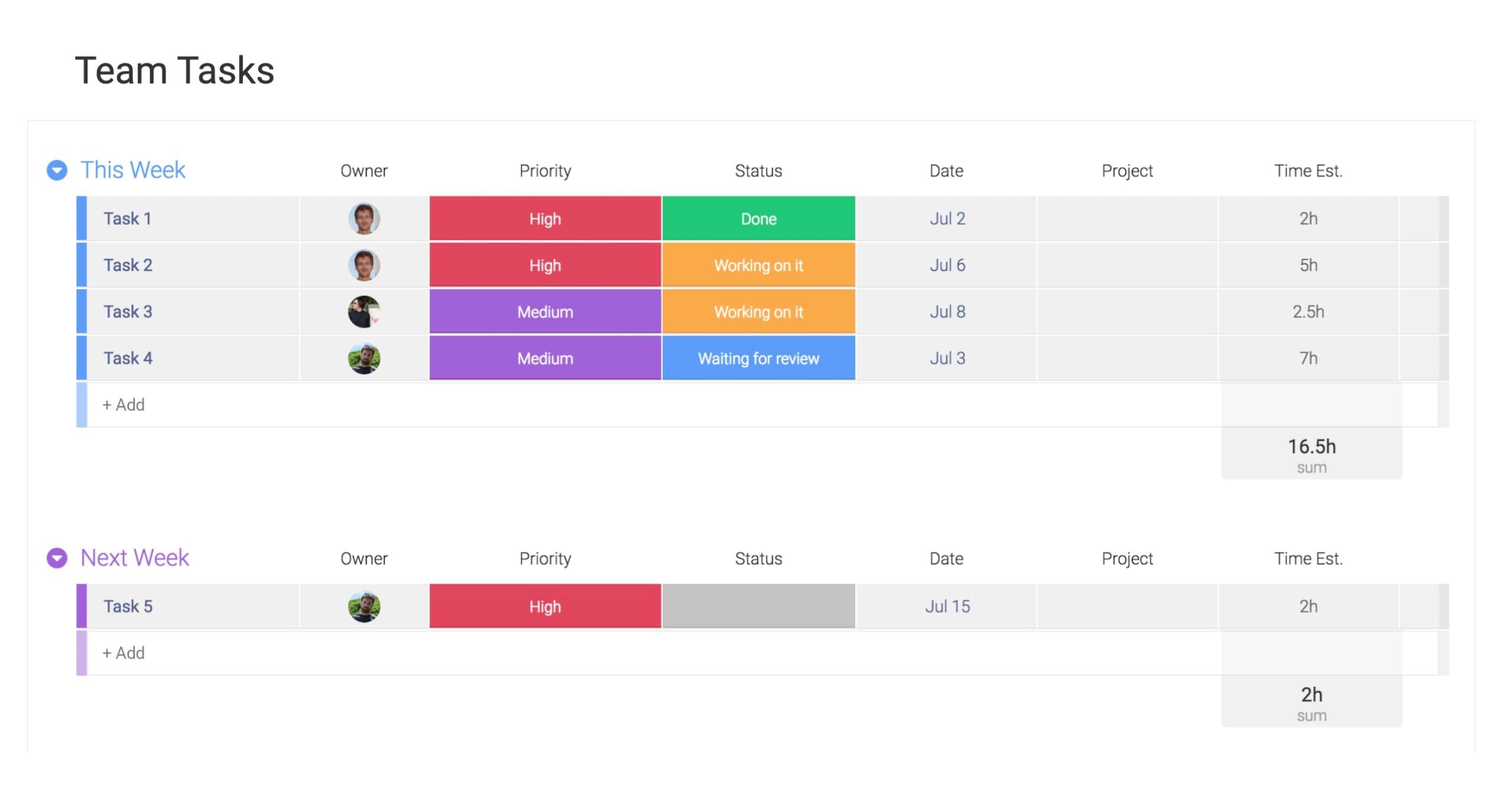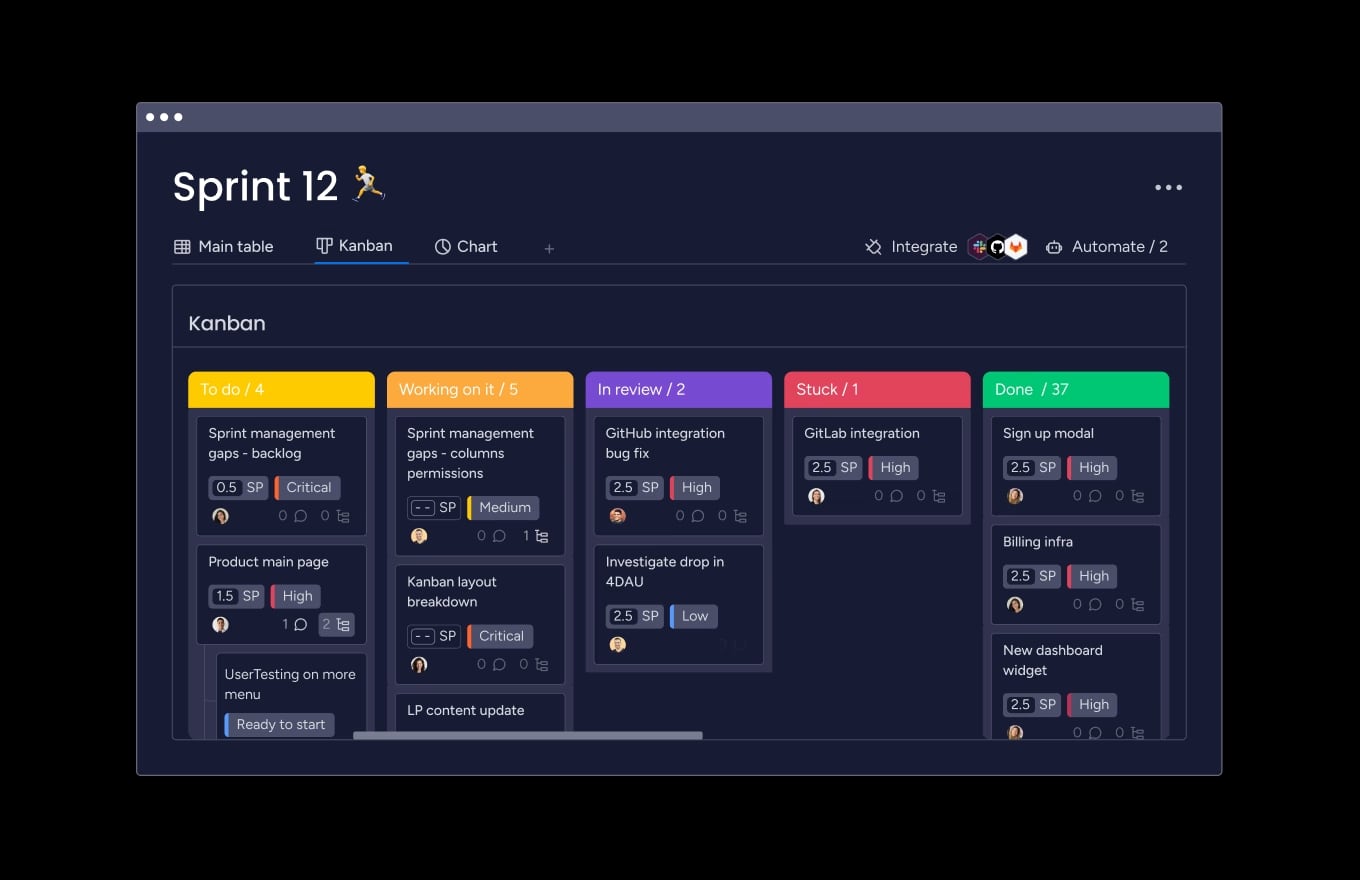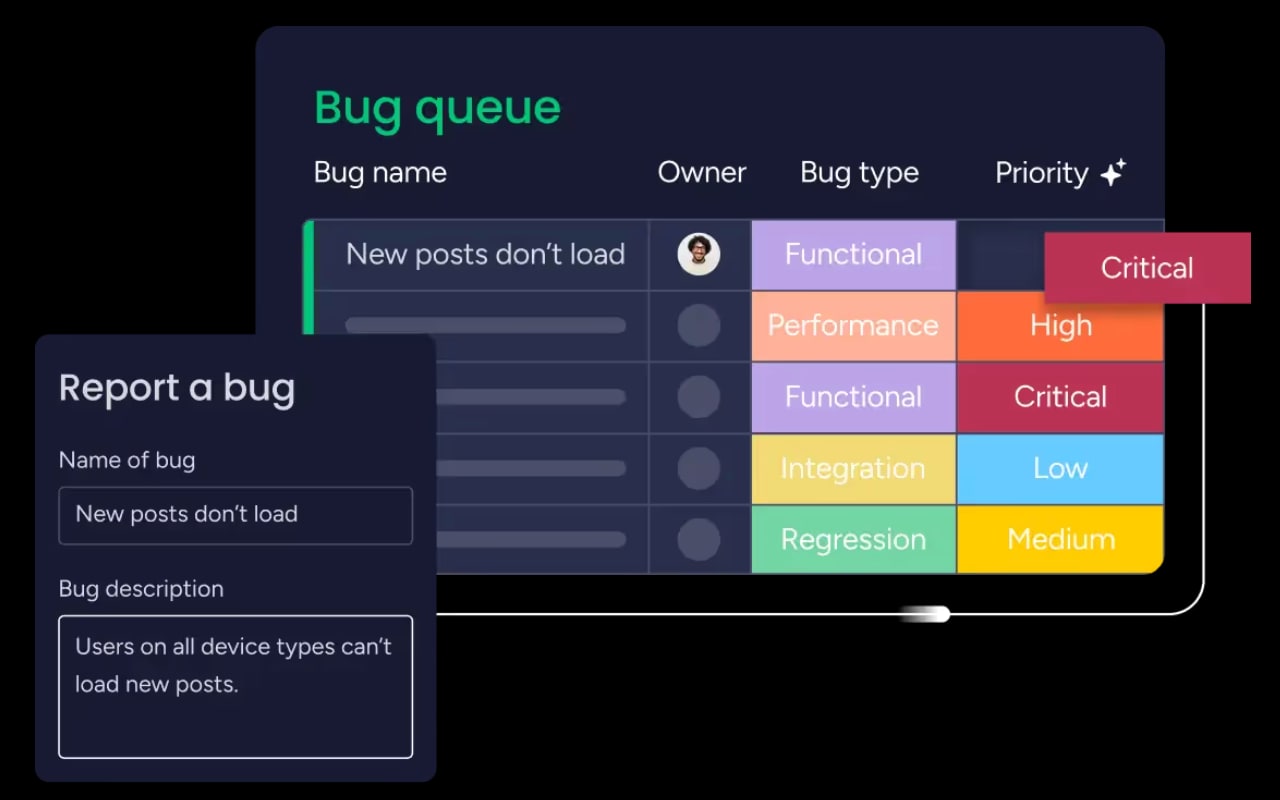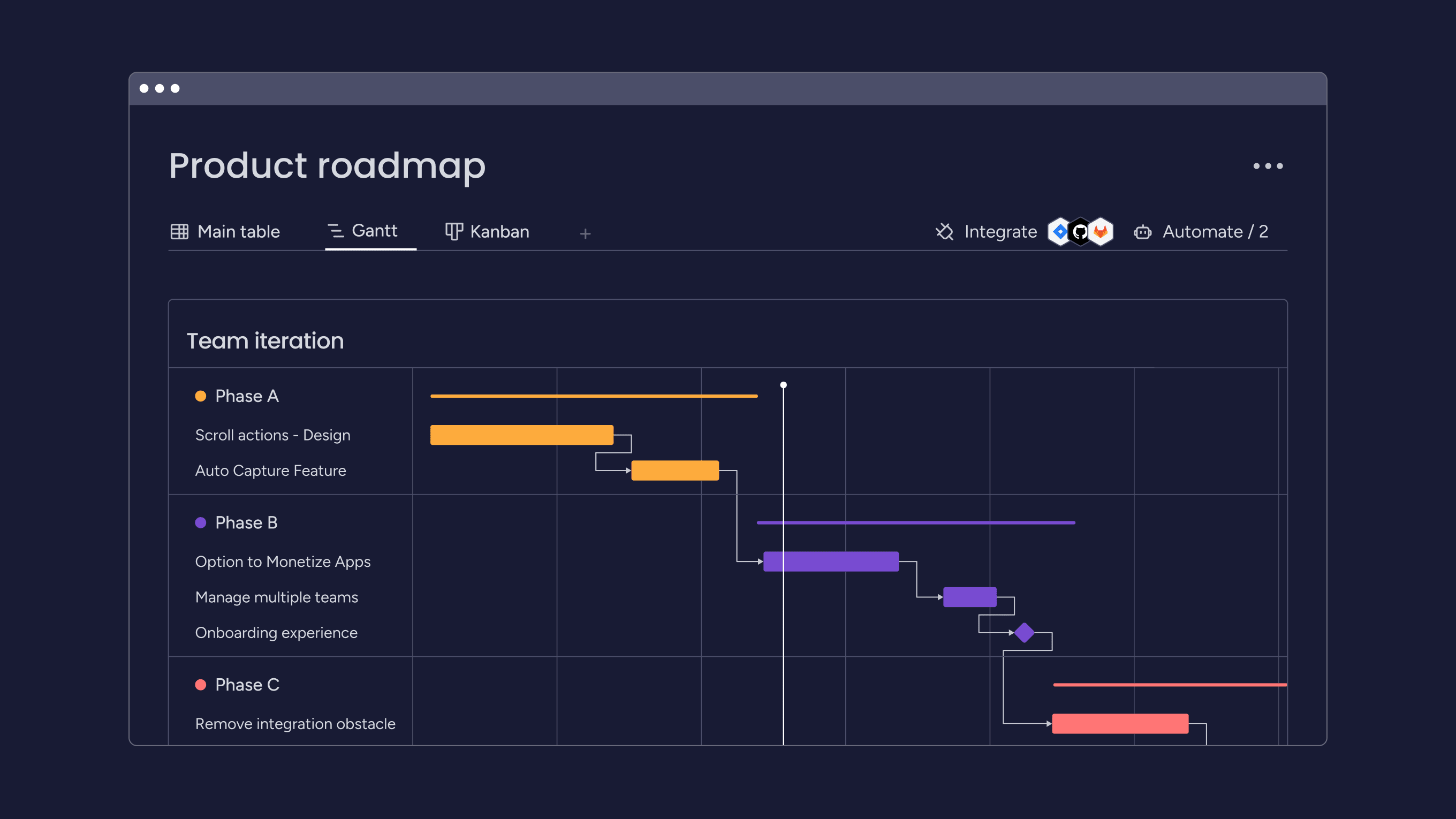Shipping more product and shrinking backlogs is the constant drumbeat for modern development teams. But what happens when the friction isn’t a lack of talent, but the process itself? When misaligned priorities and workflow bottlenecks slow you down, it’s time to look at the engine, not just the fuel.
To solve this, many successful teams adopt proven methodologies like Lean and Scrum. Lean focuses on eliminating waste and creating a smooth, continuous flow of work from idea to deployment. Scrum uses short, structured cycles called sprints to deliver value iteratively, giving teams a clear rhythm for planning, execution, and stakeholder feedback.
Understanding the core differences in the lean vs scrum debate is key to picking the right path for your team. This article walks through each methodology, from their core principles to their practical applications. We will explore their key differences, their shared values, and how you can combine them to create a hybrid approach that fits your team’s unique needs.
Key takeaways
- Choose based on your team’s needs: use Scrum for new products and less experienced teams, Lean for continuous delivery and mature teams with stable workflows.
- Combine both approaches for maximum impact: most successful teams blend Lean’s waste elimination with Scrum’s structure to achieve faster delivery and higher quality.
- monday dev supports any methodology you choose: the platform’s flexible workflows let you implement Scrum ceremonies, Lean pull systems, or hybrid approaches without forcing rigid processes.
- Both methodologies share the same core goal: whether you pick Lean or Scrum, you’re focusing on delivering customer value through team collaboration and continuous improvement.
- Start simple and evolve gradually: begin with the methodology that solves your biggest pain points, then add elements from other approaches as your team grows.
What is Lean methodology?
Lean is a structured approach to eliminating waste and maximizing value across any workflow. The central idea is simple: prioritize the activities that deliver direct value to customers and cut out anything that does not. By focusing only on what truly matters, teams create a smoother, faster path from idea to delivery.
Lean project management brings this philosophy into modern business and software development. It emphasizes continuous improvement, streamlined processes, and efficient use of resources to reduce delays and unnecessary effort. Originally developed by Toyota in the manufacturing industry, Lean has since evolved into a widely adopted framework for teams aiming to deliver higher-quality results with less friction.
The 5 core principles of Lean
Every Lean implementation is guided by five fundamental principles that originated from the Toyota Production System. Understanding these principles is crucial as they provide a strategic filter for your decisions, helping you determine what to keep, what to eliminate, and how to continuously refine your processes for maximum value.
- Define value: identify exactly what your customers want and will pay for.
- Map the value stream: visualize every step required to deliver that value.
- Create flow: remove interruptions and delays between steps.
- Establish pull: produce only what customers demand, when they demand it.
- Seek perfection: continuously improve through regular analysis and refinement.
Lean in software development
In software development, Lean emphasizes delivering working code quickly while cutting out anything that doesn’t add value. By streamlining workflows, reducing delays, and keeping documentation lightweight, teams can focus on features that genuinely serve customer needs.
A platform such as monday dev supports this approach by making workflows fully visible, highlighting bottlenecks, and enabling teams to continuously improve how they work. The result is a more adaptive process where small, frequent releases generate real user feedback and guide future iterations with clarity.
Essential Lean techniques and practices
Several practical tools help you implement Lean thinking in your daily work. These techniques make abstract principles concrete and actionable:
- Value stream mapping: visual diagrams showing how work flows from request to delivery.
- Kanban boards: visual workflow management that limits work in progress.
- Root cause analysis: systematic investigation to address underlying problems.
- Continuous improvement (Kaizen): regular reviews to make incremental process improvements.
What is Scrum framework?
Scrum is an Agile framework that organizes work into short cycles called a Scrum sprint. This means your team delivers working software every one to four weeks instead of waiting months for a big release.
Unlike traditional project management, Scrum embraces change. You break work into small pieces with a Scrum board and adapt based on regular feedback from users and stakeholders.
Scrum roles and responsibilities
Scrum defines three specific roles that work together to deliver value, as outlined in the Scrum Guide. Each role has clear responsibilities that help the team self-organize and deliver consistently:
- Product owner: manages the product backlog and ensures you build the right features.
- Scrum master: removes obstacles and helps the team follow Scrum practices.
- Development team: cross-functional group that designs, builds, and tests the product.
Scrum events and ceremonies explained
Scrum organizes work into a set of structured, time-boxed events. Each one has a clear purpose, creating a rhythm that keeps teams aligned, accountable, and focused on continuous improvement. Together, these ceremonies ensure that progress is transparent, feedback is frequent, and adjustments happen before problems slow the team down.
- Sprint planning: 2–4 hours (select and commit to the work for the next sprint).
- Daily Scrum: 15 minutes (synchronize activities, share progress, and surface obstacles).
- Sprint review: 1–2 hours (demonstrate completed work and gather stakeholder feedback).
- Sprint retrospective: 1–2 hours (reflect on the process and identify improvements).
- Sprint: 1–4 weeks (the overall container where all other Scrum events take place).
Scrum artifacts and deliverables
Scrum relies on three core artifacts to keep progress transparent and aligned. Each represents planned work or delivered value, ensuring the whole team understands what’s next and what has been achieved.
- Product backlog: an ordered list of all work needed to enhance and evolve the product.
- Sprint backlog: the items committed for the current sprint, along with the plan for delivering them.
- Product increment: the working product output at the end of each sprint, ready to provide value.
Key differences between Lean and Scrum
Lean and Scrum take fundamentally different approaches to organizing work. Understanding these differences helps you choose the right methodology or combine elements effectively.
The main distinction? Lean focuses on continuous flow and waste elimination, while Scrum provides structure through fixed iterations and defined roles.
| Aspect | Lean | Scrum |
|---|---|---|
| Focus | Eliminating waste | Delivering in iterations |
| Structure | Flexible, continuous | Fixed roles and timeboxes |
| Timeline | Continuous flow | One to four week sprints |
| Roles | No prescribed roles | Three defined roles |
| Planning | Pull-based on demand | Sprint-based commitments |
Continuous improvement in Lean vs Scrum
Both Lean and Scrum emphasize learning and adaptation, but they take different approaches to improvement:
- Lean: treats improvement as an ongoing habit, with teams continually analyzing workflows and making small, incremental adjustments as part of daily work.
- Scrum: builds improvement into the sprint cycle with retrospectives, giving teams structured time at the end of each sprint to reflect and agree on changes.
Team structure and organization
Lean promotes flexible team structures without specific roles. Anyone can contribute to process improvement and problem-solving based on the work at hand.
Scrum defines clear accountabilities through its three roles. This structure helps teams new to Agile understand responsibilities while maintaining execution flexibility.
Planning and execution methods
Lean uses pull-based systems where work starts based on actual demand, similar to Kanban vs Scrum. You respond to signals from downstream processes and adjust capacity accordingly.
Scrum operates through sprint planning where teams commit to specific work within fixed timeboxes. This provides predictability while allowing adaptation between sprints.
Metrics and performance measurement
Lean focuses on flow metrics that measure efficiency. Key measurements include:
- Cycle time: wow long work takes to complete.
- Lead time: time from request to delivery.
- Throughput: Amount of work completed over time.
Scrum emphasizes sprint-based metrics like velocity and burndown charts, often referred to as Scrum metrics. These help you understand capacity and improve estimation accuracy.
Core similarities between Lean and Scrum
Despite different approaches, Lean and Scrum share Scrum values. Both prioritize customer satisfaction, team collaboration, and continuous learning over rigid processes.
Shared focus on customer value
Both methodologies prioritize delivering maximum customer value while minimizing waste. Lean eliminates non-value activities throughout the process. Scrum delivers potentially shippable increments providing immediate value.
Teams regularly validate work against customer needs and adjust priorities based on feedback. This ensures development aligns with market demands rather than internal assumptions.
Emphasis on team collaboration
Collaboration sits at the heart of both Lean and Scrum, though each encourages it in different ways:
- Lean: promotes cross-functional problem-solving, bringing together people from different disciplines to identify and eliminate waste.
- Scrum: structures collaboration through defined events and self-organizing, cross-functional teams that share responsibility for outcomes.
Both approaches highlight the importance of open communication and collective ownership. Yet achieving this in practice can be difficult. For instance, monday’s World of Work Report revealed a perception gap: while 92% of senior leaders believe their organizations foster collaboration effectively, only 76% of individual contributors agree.
Iterative development approach
Both embrace iterative development allowing teams to learn and adapt. Lean achieves this through continuous flow and regular improvement cycles.
Scrum uses fixed sprints, aligning with the three pillars of Scrum for regular inspection and adaptation opportunities. Teams deliver frequently, gather feedback, and adjust their approach based on learning.
How Lean and Scrum connect to Agile
Both Lean and Scrum operate within the broader Agile movement. They share core values while providing specific implementation frameworks.
Understanding the Agile umbrella
Agile represents a mindset outlined in the Agile Manifesto. It emphasizes individuals, working software, customer collaboration, and responding to change.
Rather than prescribing practices, Agile provides principles that various methodologies interpret. Teams often weigh Agile vs Scrum to choose the right approach for organizing work within these principles.
Where Lean fits in Agile
Lean principles have shaped much of today’s Agile development. Ideas such as eliminating waste and driving continuous improvement are deeply embedded in Agile practices.
A core Lean principle (respect for people) also aligns closely with Agile’s focus on individuals and interactions. Both approaches emphasize empowering teams, trusting them to make sound decisions, and ensuring they have the clarity and support needed to deliver value.
Scrum as an Agile framework
Scrum provides one of the most structured Agile implementations, and it’s also the most popular. In fact, according to data from eSparkinfo, 81% of Agile teams use Scrum or a hybrid version. This popularity stems from its ability to translate abstract values into concrete practices teams can adopt immediately.

When to use Lean vs Scrum
Deciding between Lean and Scrum isn’t about choosing the “better” methodology: it’s about matching the right framework to your team’s goals and environment. Each approach brings unique strengths: Lean emphasizes continuous flow and efficiency, while Scrum provides structure and rhythm for teams tackling complex work.
The choice depends on factors like delivery cadence, team maturity, and the type of projects you’re managing. In some cases, blending elements of both creates the most effective balance.
When Lean works best
Lean excels where continuous delivery and process optimization are priorities. Consider Lean when you have:
- Continuous delivery needs: frequent deployments requiring optimized pipelines.
- Mature teams: strong technical skills and process awareness.
- Efficiency focus: priority on waste reduction across value streams.
- Stable work: maintenance or support with steady, similar items.
When Scrum works best
Scrum provides structure helping teams establish effective practices quickly. Choose Scrum for:
- New product development: innovative products with uncertain requirements.
- Less experienced teams: groups transitioning from traditional management.
- Cross-functional needs: projects requiring close coordination.
- Fixed commitments: organizations needing predictable delivery schedules.
Signs you need both approaches
Many teams combine Lean and Scrum principles, creating hybrid approaches that now dominate 50% of implementations. This works well when you face:
- Multiple team types: different groups needing different approaches.
- Complex products: systems with both new features and maintenance.
- Scaling challenges: growing teams needing structure and efficiency.

How Lean and Scrum work together
Rather than competing, Lean and Scrum complement each other. Many teams integrate principles from both for maximum effectiveness.
Creating a hybrid approach
You can blend Lean waste elimination with Scrum’s structure. You can also apply Lean Portfolio Management within sprints while maintaining Scrum roles and events.
monday dev supports this hybrid approach with flexible workflows accommodating both methodologies. Track sprint progress while monitoring cycle times and identifying bottlenecks.
Common integration patterns
Several proven patterns help combine Lean and Scrum without conflicts:
- Scrumban: Scrum’s sprints with Kanban’s visual management.
- Lean Startup with Scrum: build-measure-learn cycles within sprints.
- Scaled Agile: lean portfolio management with Scrum execution.
Avoiding implementation conflicts
Blending Lean and Scrum can be highly effective, but success depends on applying the mix with clarity and intention. The key is to balance structure with flexibility so teams have enough guidance without losing the ability to adapt to real-world needs.
Clear communication about which practices apply in different situations helps prevent confusion, while regular retrospectives give teams the chance to evaluate what’s working and refine the approach over time.
7 benefits of combining Lean and Scrum
Integrating Lean with Scrum creates powerful synergies addressing common development challenges. These benefits prove particularly valuable for complex products in dynamic environments.
1. Faster time to market
Lean’s waste elimination plus Scrum’s iterations accelerate launches. You remove bottlenecks while maintaining regular delivery cycles providing early feedback.
2. Reduced development waste
Apply Lean principles to identify waste within Scrum processes. Eliminate unnecessary meetings, excessive documentation, or unused features.
3. Enhanced team productivity
The combination provides structure through Scrum and optimization through Lean. monday dev enables this with visual workflows supporting both approaches.
4. Improved resource allocation
Lean’s pull principles enhance sprint planning preventing overcommitment. You balance capacity effectively using actual throughput data.
5. Enhanced quality control
Lean’s defect prevention complements Scrum’s iterative testing. Build quality into processes rather than testing it in later stages.
6. Greater flexibility and adaptability
Multiple tools for responding to change keep you agile. Adjust within sprints while maintaining continuous improvement focus.
7. Stronger business alignment
Regular sprint Reviews validate business value while Lean ensures all activities contribute to customer satisfaction.

How to choose between Lean and Scrum
Deciding between Lean and Scrum starts with an honest look at how your team works today. The right approach depends on the challenges you’re facing, the makeup of your team, and the kinds of projects you need to deliver. By breaking this down into your current pain points, team structure, and project goals, you’ll get a clearer picture of which methodology (or combination) fits best.
Assess your current development challenges
Understanding primary pain points determines which methodology addresses your needs. Ask yourself:
- How experienced is your team with Agile practices?
- How often do requirements change during projects?
- How much stakeholder feedback do you receive?
- Do you need specific delivery dates or can you adapt?
Evaluate your team structure and culture
Team composition and experience influence methodology effectiveness. New teams benefit from Scrum’s structure. Experienced teams might prefer Lean’s flexibility.
Consider team size, distribution, skill diversity, and previous Agile experience when choosing.
Consider your project types and goals
Different work types need different approaches. Innovation projects with uncertain requirements favor Scrum. Optimization work benefits from Lean.
Many teams need different approaches for different work types within the same organization.
Supporting Lean and Scrum in monday dev
Lean and Scrum may take different paths, but both rely on clear workflows, transparency, and strong collaboration. The strength of monday dev is that it supports each approach without locking teams into rigid processes. Whether you want the structure of Scrum ceremonies, the flow of Lean project management, or a mix of both, the platform adapts to fit your way of working.
Flexible workflows for any methodology
Create workflows matching your actual processes whether following Scrum ceremonies or Lean’s pull approach. The platform’s customizable boards transform into Scrum boards with sprint planning views or Kanban boards with WIP limits. Use automations to streamline handoffs and monday dev’s ready-made templates to implement either methodology in minutes.
This flexibility empowers teams to maintain high velocity while adapting to changing requirements without system constraints.
Real-time visibility across teams
Transparency is essential whether you’re working with Scrum or Lean, and monday dev makes it easy to keep everyone aligned through real-time insights. Teams can:
- Track progress with burndown charts for Scrum or cycle time analytics for Lean.
- Spot bottlenecks quickly through workflow visualization.
- Monitor key metrics with customizable dashboards that update automatically.
With this level of visibility, teams stay on top of both execution and strategy, ensuring every sprint or workflow drives toward the right outcomes.
Seamless integration and collaboration
Connect development teams with business units for full alignment through monday dev’s 200+ integrations with tools like GitHub, Jira, and Slack. Support both Lean’s cross-functional collaboration and Scrum’s defined roles through transparent communication, a common challenge in large organizations where only 61% of employees report satisfaction with transparency. Use @mentions, embedded docs, and centralized file storage to keep context with the work and eliminate knowledge silos.

Make the right choice for your development team
Both Lean and Scrum offer valuable approaches to managing development work. Your choice depends on specific circumstances rather than abstract preferences.
Start with the methodology addressing your current challenges. Gradually incorporate elements from other approaches as your team matures.
Success comes from commitment to principles and regular reflection on what’s working. Create sustainable practices delivering customer value while supporting team growth.
Frequently asked questions
Is Kanban part of Lean methodology or Agile methodology?
Kanban originated from Lean manufacturing principles but is now widely used in Agile software development contexts. It's a practice that can be applied within various methodologies to visualize workflow and limit work in progress.
Can you implement Scrum framework without being fully Agile?
While possible to adopt Scrum practices without Agile values, Scrum works most effectively when teams commit to Agile principles. Mechanical adoption without the underlying mindset often leads to disappointing results.
What is the difference between Lean Six Sigma and Scrum methodology?
Lean Six Sigma focuses on reducing defects in established processes while Scrum creates new products in uncertain environments. Lean Six Sigma also emphasizes statistical analysis, whereas Scrum embraces adaptation and empirical learning.
How long does it take to transition from Scrum to Lean methodology?
Transition time varies based on team experience and organizational support, typically taking several months. Teams must learn new metrics, adjust planning approaches, and develop waste identification skills.
Which methodology works more effectively for distributed development teams?
Both can work for distributed teams addressing different challenges. Scrum's structured ceremonies help remote alignment while Lean's visual management reduces coordination overhead across time zones.
Do development teams need certification to implement Lean or Scrum practices?
Certification isn't required but training helps teams understand principles and avoid mistakes. Practical experience remains the most valuable teacher though education accelerates adoption.
 Get started
Get started 


